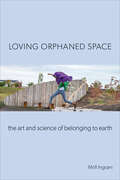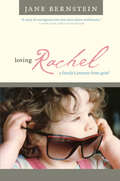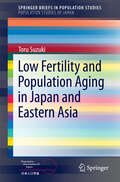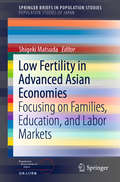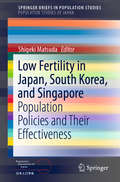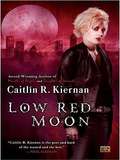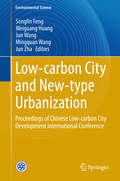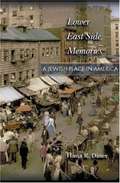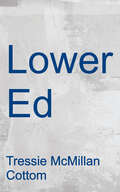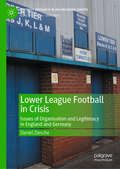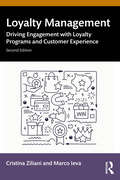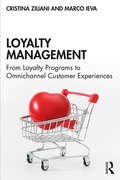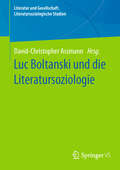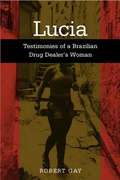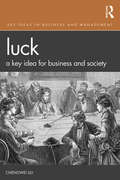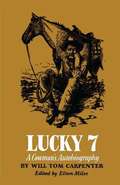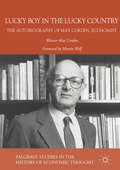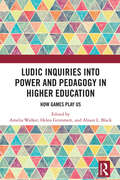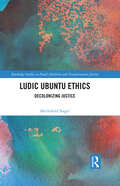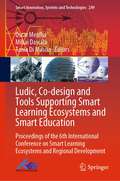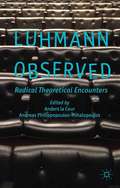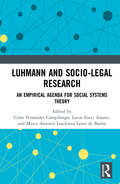- Table View
- List View
Loving Orphaned Space: The Art and Science of Belonging to Earth
by Mrill IngramHow we relate to orphaned space matters. Voids, marginalia, empty spaces—from abandoned gas stations to polluted waterways—are created and maintained by politics, and often go unquestioned. In Loving Orphaned Space, Mrill Ingram provides a call to action to claim and to cherish these neglected spaces and make them a source of inspiration through art and/or remuneration. Ingram advocates not only for “urban greening” and “green planning,” but also for “radical caring.” These efforts create awareness and understanding of ecological connectivity and environmental justice issues—from the expropriation of land from tribal nations, to how race and class issues contribute to creating orphaned space. Case studies feature artists, scientists, and community collaborations in Chicago, New York, and Fargo, ND, where grounded and practical work of a fundamentally feminist nature challenges us to build networks of connection and care. The work of environmental artists who venture into and transform these disconnected sites of infrastructure allow us to rethink how to manage the enormous amount of existing overlooked and abused space. Loving Orphaned Space provides new ways humans can negotiate being better citizens of Earth.
Loving Orphaned Space: The Art and Science of Belonging to Earth
by Mrill IngramHow we relate to orphaned space matters. Voids, marginalia, empty spaces—from abandoned gas stations to polluted waterways—are created and maintained by politics, and often go unquestioned. In Loving Orphaned Space, Mrill Ingram provides a call to action to claim and to cherish these neglected spaces and make them a source of inspiration through art and/or remuneration. Ingram advocates not only for “urban greening” and “green planning,” but also for “radical caring.” These efforts create awareness and understanding of ecological connectivity and environmental justice issues—from the expropriation of land from tribal nations, to how race and class issues contribute to creating orphaned space. Case studies feature artists, scientists, and community collaborations in Chicago, New York, and Fargo, ND, where grounded and practical work of a fundamentally feminist nature challenges us to build networks of connection and care. The work of environmental artists who venture into and transform these disconnected sites of infrastructure allow us to rethink how to manage the enormous amount of existing overlooked and abused space. Loving Orphaned Space provides new ways humans can negotiate being better citizens of Earth.
Loving Rachel: A Family's Journey from Grief
by Jane BernsteinIn 1983, Jane Bernstein had everything she ever wanted: a healthy four-year-old daughter, Charlotte; a happy marriage; a highly praised first novel; and a brand new baby, Rachel. But by the time Rachel was six weeks old, a neuro-ophthalmologist told Jane and her husband that their baby was blind. Although there was some hope that Rachel might gain partial vision as she grew, her condition was one that often resulted in seizure disorders and intellectual impairment. So began a series of medical and emotional setbacks that were to plague Rachel and her parents and strain their marriage to the breaking point. Spanning the first four years of Rachel’s life, Loving Rachel is a heartbreaking chronicle of a marriage and a compelling story of parental love told with searing honesty and surprising humor.
Loving V. Virginia in a Post-Racial World
by Rose Cuison Villazor Kevin Noble MaillardIn 1967, the U. S. Supreme Court ruled that laws prohibiting interracial marriage were unconstitutional in Loving vs. Virginia. Although this case promotes marital freedom and racial equality, there are still significant legal and social barriers to the free formation of intimate relationships. Marriage continues to be the sole measure of commitment, mixed relationships continue to be rare, and same-sex marriage is only legal in 6 out of 50 states. Most discussion of Loving celebrates the symbolic dismantling of marital discrimination. This book, however, takes a more critical approach to ask how Loving has influenced the "loving" of America. How far have we come since then, and what effect did the case have on individual lives?
Low Fertility and Population Aging in Japan and Eastern Asia
by Toru SuzukiThis book provides a unique comparative view of the extremely low fertility and drastic population aging in Eastern Asian countries. After discussing demographic and political developments of Japan in detail as a reference case, accelerated changes in Korea, Taiwan and China are interpreted with a comparative cultural view. In addition to the well-known cultural divide between countries with strong and weak family ties, this book proposes another divide between offspring of the feudal family and that of the Confucian family. Included is a discussion of how the discrepancy between the compressed change in the socioeconomic system and the slow change in the family system has resulted in extremely low fertility in Eastern Asia. A comparison of policy development reveals that the sense of overpopulation has caused difficulty in launching pro-natal policy interventions in Eastern Asia, especially in China. Impacts of fertility decline on population aging, total dependency ratio and the timing of population decline in Eastern Asia are analyzed with a stylized model. The remaining Confucian family pattern is especially important in understanding and predicting political development to cope with accelerated population aging. This book is a valuable resource for researchers who are interested in the latest and most surprising demographic phenomena in the region.
Low Fertility in Advanced Asian Economies: Focusing on Families, Education, and Labor Markets (SpringerBriefs in Population Studies)
by Shigeki MatsudaThis book focuses on the links between family, education, and employment systems in the Asian developed economies, proposing that these three systems and their interrelations are powerful factors causing the low fertility in Asia.The phenomenon of low fertility has been widely observed in developed countries, and the birthrate in Asian countries is among the lowest in the world. Although these countries have implemented measures to counter the falling birthrate, the expected effect has not yet been achieved. Moreover, Asia has seen a rapid decrease in the number of marriages. To promote effective countermeasures, it is necessary to clarify the factors influencing the low birthrate and decline in the number of marriages. Based on a statistical analysis of survey results mainly from Japan, South Korea, and Singapore, this book discusses several important points. First, because the family system is strong, cohabitation and children born to single mothers are not socially accepted. Further, mothers play a strong role in fulfilling expectations for children’s education. Second, the popularization of higher education and intense academic competition, which have been a driving force for rapid economic growth, have led to many parents opting to have fewer children, as the cost of education is high. Lastly, wage disparity is large and employment stability is a matter of concern. These factors increase competition within education and, in turn, make it difficult for the young generation to choose marriage. Within the employment environment, balancing work and family life is problematical, especially for women.
Low Fertility in Japan, South Korea, and Singapore: Population Policies and Their Effectiveness (SpringerBriefs in Population Studies)
by Shigeki MatsudaThis book describes the low fertility status in three developed Asian countries—Japan, South Korea, and Singapore—and outlines countermeasures for their declining birthrates. Based on the characteristics of each society, the authors discuss why their fertility rates have not yet recovered. Low fertility is a demographic phenomenon that first occurred in Europe and subsequently spread across other countries. Currently, the fertility rates in Europe are relatively stable, while those in developed Asian economies are the lowest worldwide. This may cause labor shortages and weaken their social security systems, undermining Asia’s social and economic sustainability despite its remarkable economic development. In response to low fertility, some Asian countries have implemented countermeasures: Japan has introduced measures based on childcare facilities and work–life balance. Similarly, since the mid-2000s South Korea has established countermeasures to promote a balance between work and child rearing, as well as expanded childcare services. Singapore began introducing countermeasures before the other two countries, including various advanced measures. Yet none of these countries has seen a full recovery in fertility rates. Based on a statistical analysis of survey results from the three countries, this book makes several important points. The first is that the policy has been ineffective in Japan due to a discrepancy between the needs of parents raising children and those who are the targets of the countermeasures. Second, the work–life balance and child-rearing support measures that have been promoted in Japan and South Korea have not affected the number of children that women want to have. Third, Singaporean values tend to place individual emphasis on competition with oneself (education and career status) rather than on married life. This intense competition has lowered fertility rates. To restore these rates, each country must promote policies that better address its specific issues.
Low Red Moon
by Caitlin R. KiernanSeveral years after the events in Threshold, Chance and Deacon have married. They're looking ahead to the future, trying to put the past behind them. But new nightmares await them as a woman with a need for violence enters their lives. And something even worse has followed her...
Low-carbon City and New-type Urbanization
by Jun Wang Weiguang Huang Mingquan Wang Songlin Feng Jun ZhaIn the face of increasingly serious resource and environmental challenges, the world has already accepted low-carbon development as the main way forward for future city construction. Chinese cities have encountered many problems during their development, including land constraints, energy shortages, traffic congestion and air pollution. For this reason, the national meeting of the Central Work Conference on Urbanization made the strategic decision to take a new approach to urbanization and indicated that in future the key features of urbanization in China will be low-carbon development and harmony between the environment and resources. This book discusses the "low-carbon city" as the new pattern of Chinese urbanization. This represents a major change and takes "intensive land use," "intelligent," "green" and "low carbon" as its key words. Low carbon will become an important future development direction for Chinese urbanization development. In the twenty-first Century in response to the global climate change, countries have started a wave of low-carbon city construction. But in China, there are still many disputes and misunderstandings surrounding the issue. Due to a lack of research, low-carbon city construction in China is still in the early stages, and while there have been successes, there have also been failures. There are complex and diverse challenges in applying low-carbon development methods in the context of today's Chinese cities. The construction of low-carbon cities requires efficient government, the technological innovation of enterprises, and professional scholars, but also efforts on the part of the public to change their daily activities. Based on the above considerations, the collection brings together experts from urban planning and design, clean-energy systems, low-carbon transportation, new types of city infrastructure and smart cities etc. , in the hope of forming some solutions for Chinese low-carbon city development.
Lower East Side Memories: A Jewish Place In America
by Hasia R. DinerManhattan's Lower East Side stands for Jewish experience in America. With the possible exception of African-Americans and Harlem, no ethnic group has been so thoroughly understood and imagined through a particular chunk of space. Despite the fact that most American Jews have never set foot there--and many come from families that did not immigrate through New York much less reside on Hester or Delancey Street--the Lower East Side is firm in their collective memory. Whether they have been there or not, people reminisce about the Lower East Side as the place where life pulsated, bread tasted better, relationships were richer, tradition thrived, and passions flared. This was not always so. During the years now fondly recalled (1880-1930), the neighborhood was only occasionally called the Lower East Side. Though largely populated by Jews from Eastern Europe, it was not ethnically or even religiously homogenous. The tenements, grinding poverty, sweatshops, and packs of roaming children were considered the stuff of social work, not nostalgia and romance. To learn when and why this dark warren of pushcart-lined streets became an icon, Hasia Diner follows a wide trail of high and popular culture. She examines children's stories, novels, movies, museum exhibits, television shows, summer-camp reenactments, walking tours, consumer catalogues, and photos hung on deli walls far from Manhattan. Diner finds that it was after World War II when the Lower East Side was enshrined as the place through which Jews passed from European oppression to the promised land of America. The space became sacred at a time when Jews were simultaneously absorbing the enormity of the Holocaust and finding acceptance and opportunity in an increasingly liberal United States. Particularly after 1960, the Lower East Side gave often secularized and suburban Jews a biblical, yet distinctly American story about who they were and how they got here. Displaying the author's own fondness for the Lower East Side of story books, combined with a commitment to historical truth, Lower East Side Memories is an insightful account of one of our most famous neighborhoods and its power to shape identity.
Lower Ed: The Troubling Rise of For-Profit Colleges in the New Economy
by Tressie McMillan CottomLower Ed is quickly becoming the definitive book on the fastest-growing sector of higher education at the turn of the twenty-first century: for-profit colleges. With sharp insight and deliberate acumen, Tressie McMillan Cottom―a sociologist who was once a recruiter at two for-profit colleges―expertly parses the fraught dynamics of this big-money industry. <p><p>Drawing on more than one hundred interviews with students, employees, executives, and activists, Lower Ed details the benefits, pitfalls, and real costs of the expansion of for-profit colleges. Now with a new foreword by Stephanie Kelton, economic advisor to Bernie Sanders's presidential campaign, this smart and essential book cuts to the very core of our nation's broken social contracts and the challenges we face in our divided, unequal society.
Lower League Football in Crisis: Issues of Organisation and Legitimacy in England and Germany (Football Research in an Enlarged Europe)
by Daniel ZiescheWhile the field of football studies has produced an abundance of literature on professional, top-league football, there is little research output to do with the non-top level football. This book explores the relationship between the top and lower leagues, laying open the drastic schisms that exist between the different levels. The study links the developments at the top level of English and German football in the past 30 years to transformational processes in lower league football. Illustrating how the hegemonic status of top football weighs hard on the spheres below, it depicts how it also serves as a blueprint for lower league football clubs’ strategies in coping with a threefold dilemma of institutional legitimacy that shows itself in economic, cultural and social dimensions. Taking the different club structures in both national contexts as a starting point, it portrays both the efficacy of institutional frameworks and how these can be challenged from below. This research will be of interest to students and scholars across football studies, sports studies, the sociology of sport, and organisation studies.
Lowering Higher Education
by Anton L. Allahar James CoteWhat happens to the liberal arts and science education when universities attempt to sell it as a form of job training? In Lowering Higher Education, a follow-up to their provocative 2007 book Ivory Tower Blues, James E. Côté and Anton L. Allahar explore the subverted 'idea of the university' and the forces that have set adrift the mission of these institutions. Côté and Allahar connect the corporatization of universities to a range of contentious issues within higher education, from lowered standards and inflated grades to the overall decline of Humanities, Social Sciences, and Natural Sciences instruction.Lowering Higher Education points to a fundamental disconnect between policymakers, who may rarely set foot in contemporary classrooms, and the teachers who must implement their educational policies--which the authors argue are poorly informed--on a daily basis. Côté and Allahar expose stakeholder misconceptions surrounding the current culture of academic disengagement and supposed power of new technologies to motivate students. While outlining what makes the status quo dysfunctional, Lowering Higher Education also offers recommendations that have the potential to reinvigorate liberal education.
Loyalty Management: Driving Engagement with Loyalty Programs and Customer Experience
by Cristina Ziliani Marco IevaIn this insightful text, Cristina Ziliani and Marco Ieva trace the evolution of thinking, contemporary themes and practice in loyalty management. Loyalty management is increasingly identified with the design and management of a quality customer experience in the journey across the many touchpoints that connect the customer with the brand. Evaluating the research on best practice and offering concrete examples from industry, including seven international case studies, the authors present a fresh take on the tools, strategies and skills – from loyalty programs to CRM to CX – that underpin loyalty’s key significance in marketing. New to this 2nd edition, readers will find: A new chapter exploring the strategic relevance of loyalty management for company long-term profitability. A new chapter on loyalty and sustainability, based on research on 90 case studies of loyalty initiatives worldwide, supporting organizations as they strive to meet their ESG requirements and demonstrating how they can use their loyalty programs to do so. Coverage of the role of touchpoints in developing loyalty, from physical stores to voice assistants, drawing from state-of-the-art international scientific research. Discussion of metrics and KPIs for measuring loyalty management, as well as further exploration of the role of emerging technologies, in particular the application of predictive and generative artificial intelligence to loyalty strategies. New case studies and examples from a broader range of industries and geographical regions. Celebrating 25 years of experience in research, consulting and teaching within the Osservatorio Fedeltà UniPR (Loyalty Observatory), the authors have compiled a unique research-based, practice-oriented text.It will guide marketers, business leaders and postgraduate students through the changes in marketing thought and practice of loyalty management – including omnichannel, AI and sustainability – as well as offering practical guidance on the skills and capabilities that companies need if they want to be successful at delivering essential, loyalty-driving customer experiences.
Loyalty Management: From Loyalty Programs to Omnichannel Customer Experiences
by Cristina Ziliani Marco IevaIn this insightful new text, Cristina Ziliani and Marco Ieva trace the evolution of thinking and practice in loyalty management. From trading stamps to Amazon Prime and Alibaba 88 Membership, they present a fresh take on the tools, strategies and skills that underpin its key significance in marketing today. Loyalty management is increasingly identified with the design and management of a quality customer experience on the journey across the many touchpoints that connect the customer with the brand. Evaluating the research on best practice and offering concrete examples from industry, the authors argue that existing schemes and systems are not just things of the past but should be the optimal starting point for companies needing to foster customer loyalty in an omnichannel world. Drawing on 20 years of experience in research, consulting and teaching, the authors have compiled a unique research-based practice-oriented text. It will guide marketers, business leaders and students through the changes in marketing thought and practice on loyalty management as well as offering practical guidance on the skills and capabilities that companies need if they want to be successful at delivering essential loyalty-driving customer experiences.
Luc Boltanski und die Literatursoziologie (Literatur und Gesellschaft. Literatursoziologische Studien)
by David-Christopher AssmannEine breite Rezeption der Arbeiten Luc Boltanskis steht in literatursoziologischen Zusammenhängen aus. Der Band setzt an diesem Befund an und eruiert explorativ die Anschlussfähigkeit von Boltanskis Studien für die Generierung und Schärfung literatursoziologischer Fragestellungen und Analysen. Die Beiträge fragen erstens in theoretischer Hinsicht nach der Brauchbarkeit der Arbeiten Boltanskis für die literatursoziologische Begriffsbildung, Entwicklung von Fragerichtungen und Perspektivierung von Untersuchungsergebnissen. Zweitens erproben sie in konkreten Fallstudien die Tragweite der Konzepte Boltanskis für literatursoziologisches Arbeiten. Seinen Fluchtpunkt hat der Band in der Frage, inwiefern Boltanskis Ansatz zu dem beitragen kann, was man probehalber neopragmatische Literatursoziologie nennen könnte.
Lucia: Testimonies of a Brazilian Drug Dealer's Woman
by Robert Gay"Favelas, or shantytowns, are where cocaine is mainly sold in Rio de Janeiro. There are some six hundred "favelas in the city and most of them are controlled by well-organized and heavily armed drug gangs. The struggle for the massive profits from this drug trade has resulted in what are increasingly violent and deadly confrontations between rival drug gangs and a corrupt and brutal police force, that have transformed parts of the city into a war-zone. "Lucia tells the story of one woman who was once intimately involved with drug gang life in Rio throughout the 1990s. Through a series of conversations with the author, Lucia describes conditions of poverty, violence and injustice that are simply unimaginable to outsiders. In doing so, she explains why women like her become involved with drugs and gangs and why this situation is unlikely to change.
Luck: A Key Idea for Business and Society (Key Ideas in Business and Management)
by Chengwei LiuCase studies of business and management success tend to focus on factors such as leadership, innovation, competition, and geography, but what about good fortune? This book highlights luck as a key idea for business and society. The author provides insights from economics, sociology, political science, philosophy, and psychology to create a brief intellectual history of luck. In positioning luck as a key idea in management, the book analyzes various facets of fortune such as randomness, serendipity, and opportunity. Often overlooked given psychological bias toward meritocratic explanations, this book quantifies luck to establish the idea in a more central role in understanding variations in business performance. In bringing the concept of luck in from the periphery, this concise book is a readable overview of management which will help students, scholars, and reflective practitioners see the subject in a new light.
Lucky 7: A Cowman's Autobiography
by Will Tom Carpenter"No. 7"—as Carpenter, the youngest of seven children, called himself—was born in Missouri in 1854 and moved west with his family, first to Kansas, then to the settlements near Pikes Peak, and finally, in 1872, to Texas with his elder brother. From the time he made his first cattle drive, he wanted no other life but that of herding longhorns across the free and flat grasslands of the West. His schooling was the trail, the campfire, the saddle. In 1900, after a full and active life, he retired to his own ranch west of the Pecos. As the years passed, he sadly watched the fences go up and the free range disappear. Thus this book came to be written from the longing memory of a time-stranded cowman. He tells his story in the hard-punching, gritty language, direct humor, and attachment to bald fact and frank opinion that characterize the true Westerner. Elton Miles has provided an introduction that fills in the details of Carpenter's life and completes a "vivid picture of the genuine old-time cowman," as Southwest Review observed.
Lucky Boy in the Lucky Country
by Warner Max CordenCorden has written a charming and insightful account of his professional and personal life, from his childhood in Bresiau, Germany, until his retirement in Melbourne, with some closing contemporary thoughts on the revival of protectionism. The book is divided into two parts. Part I considers Corden's early life, from a young boy growing up in Nazi Germany, to his immigration from England to Australia and what that means for the author's self-identify. Part II addresses Corden's work on the Australian Protection Policy for which he is perhaps best known, before reflecting upon the author's time at Oxford University and the Australian National University, and, finally, moving on to review contributions made at the IMF, John Hopkins University, and The World Bank. This book will be of interest to all aspiring economists, as well as established economists familiar with Corden's work. It is an inspiring and profound record of the intellectual journey made by one of Australia's best known economists.
Ludic Inquiries Into Power and Pedagogy in Higher Education: How Games Play Us
by Alison L. Black Helen Grimmett Amelia WalkerThis book interrogates the role games and playfulness bear in both formal education and informal social learning. Responsive to contemporary social and ecological challenges, this book especially explores games’ interactions with social power. On one hand, games sometimes operate to reinforce ideologies that normalise social injustice and environmental disregard. On the other, games offer rich possibilities for questioning such ideologies and encouraging change.Strongly interdisciplinary, the book assembles 20 chapters written by 50 experts across fields including education, game design, cultural studies, sociology, Indigenous studies, disability studies, queer studies, STEM, legal studies, history, creative writing, visual arts, music, the creative industries, and social inclusion. These contributions not only make games a focus but incorporate playful research writing strategies, demonstrating methods of what we term ludic inquiry. This includes chapters written using arts-based research, practice-led research, poetic inquiry, narrative inquiry, autoethnography, duoethnography, and more. Organised across four themes – ‘philosophical sparks’, ‘lived experiences’, ‘pedagogical perspectives’, and ‘the spirit of play’ – this book emphasises the radical egalitarian possibilities inherent in critical attention to games and how we play (or get played by) them. Its fresh insights will interest all readers interested in creatively remaking our worlds.
Ludic Ubuntu Ethics: Decolonizing Justice (Routledge Studies in Penal Abolition and Transformative Justice)
by Mechthild NagelLudic Ubuntu Ethics develops a positive peace vision, taking a bold look at African and Indigenous justice practices and proposes new relational justice models. ‘Ubuntu’ signifies shared humanity, presenting us a sociocentric perspective of life that is immensely helpful in rethinking the relation of offender and victim. In this book, Nagel introduces a new theoretical liberation model—ludic Ubuntu ethics—to showcase five different justice conceptions through a psychosocial lens, allowing for a contrasting analysis of negative Ubuntu (eg., through shaming and separation) towards positive Ubuntu (eg., mediation, healing circles, and practices that no longer rely on punishment). Providing a novel perspective on penal abolitionism, the volume draws on precolonial (pre-carceral) Indigenous justice perspectives and Black feminism, using discourse analysis and a constructivist approach to justice theory. Nagel also introduces readers to a post secular turn by taking seriously the spiritual dimensions of healing from harm and highlighting the community’s response. Spanning disciplinary boundaries and aimed at readers seeking to understand how to move beyond reintegrative shaming and restorative justice theories, the volume will engage scholars of criminology, philosophy and law, and more specifically penal abolitionism, social ethics, peace studies, African studies, critical legal studies, and human rights. It will also be of great interest to practitioners and activists in restorative justice, mediation, social work, and performance studies.
Ludic, Co-design and Tools Supporting Smart Learning Ecosystems and Smart Education: Proceedings of the 6th International Conference on Smart Learning Ecosystems and Regional Development (Smart Innovation, Systems and Technologies #249)
by Tania Di Mascio Óscar Mealha Mihai DascaluThis book brings together the contributions of the 6th International Conference on Smart Learning Ecosystems and Regional Development, which aims at promoting reflection and discussion concerning R&D work, policies, case studies, entrepreneur experiences with a special focus on understanding the relevance of smart learning ecosystems (e.g., schools, campus, working places, informal learning contexts, etc.) for regional development and social innovation and how the effectiveness of the relation of citizens and smart ecosystems can be boosted. This forum has a special interest in understanding how technology-mediated instruments can foster the citizen’s engagement with learning ecosystems and territories, namely by understanding innovative human-centric design and development models/techniques, education/training practices, informal social learning, innovative citizen-driven policies, technology-mediated experiences and their impact. This set of concerns will contribute to foster the social innovation sectors and ICT and economic development and deployment strategies alongside new policies for smarter proactive citizens.
Luhmann Observed
by Andreas Philippopoulos-Mihalopoulos Anders La CourThis book, for the first time, brings Niklas Luhmann's work into dialogue with other theoretical positions, including Lacan, Derrida, Deleuze, gender studies, bioethics, translation, ANT, eco-theories and complexity theory.
Luhmann and Socio-Legal Research: An Empirical Agenda for Social Systems Theory
by Celso Fernandes Campilongo Lucas Fucci Amato Marco Antonio Loschiavo Leme de BarrosThis book discusses the designs and applications of the social systems theory (built by Niklas Luhmann, 1927–1998) in relation to empirical socio-legal studies. This is a sociological and legal theory known for its highly complex and abstract conceptual apparatus. But how to change its scale in order to study more localised phenomena, and to deal with empirical data, such as case law, statutes, constitutions and regulation? This is the concern of a wide variety of scholars from many regions engaged in this volume. It focuses on methodological discussions and empirical examples concerning the innovations and potentials that functional and systemic approaches can bring to the study of legal phenomena (institutions building, argumentation and dispute-settlement), in the interface with economy and regulation, and with politics and public policies. It also discusses connections and contrasts with other jurisprudential approaches – for instance, with critical theory, law and economics, and traditional empirical research in law. Two decades after Luhmann’s death, the 21st century has brought countless transformations in technologies and institutions. These changes, resulting in a hyper-connected, ultra-interactive world society bring operational and reflective challenges to the functional systems of law, politics and economy, to social movements and protests, and to major organisational systems, such as courts and enterprises, parliaments and public administration. Pursuing an empirical approach, this book details the variable forms by which systems construct their own structures and semantics and ‘irritate’ each other. Engaging Luhmann’s theoretical apparatus with empirical research in law, this book will be of interest to students and researchers in the field of socio-legal studies, the sociology of law, legal history and jurisprudence.
